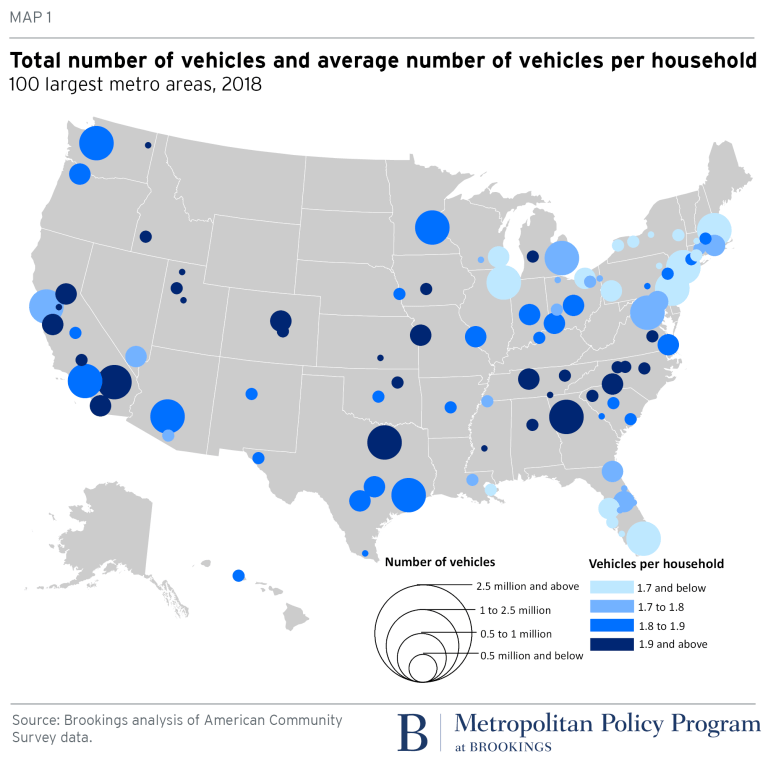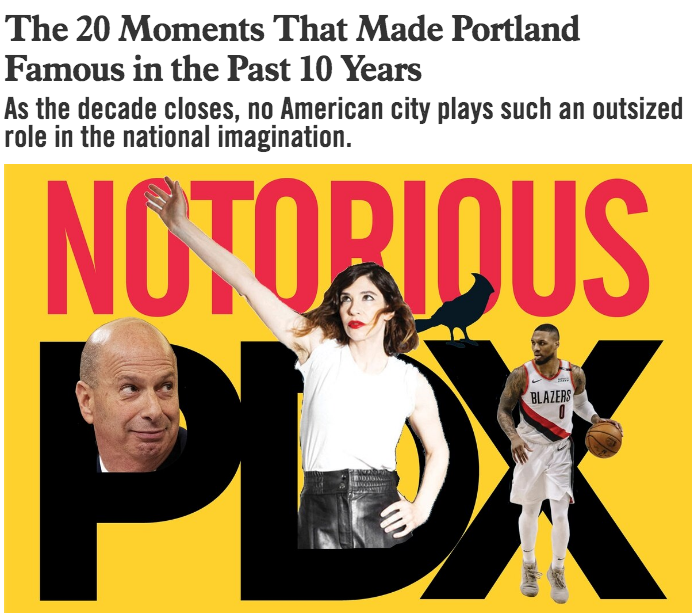What City Observatory this week
1. 2019: The Year Observed. We take a look back at 2019 and review some of the most important City Observatory commentaries, interesting stories and valued research. Our most read post of 2019 was “Ten things more inequitable than road pricing.” Other highlights were our “A to Z” list of all the things people claim cause gentrification (a list that expands weekly, and now includes “little libraries.” We were also proud to offer up our on policy prescription for pre-empting displacement (dedicating a portion of TIF funds in gentrifying neighborhoods to affordable housing construction).
2. Why helping people move out of low income neighborhoods is a good idea. We now know that the neighborhood you grow up in has a huge impact on your future success, especially for kids from low income households. Building on this insight, Seattle has created a pilot program to provide vouchers, along with some more intensive home-finding services, to enable low income households to find and rent housing in “high opportunity” neighborhoods. The preliminary results of the experiment are promising: many households in the experimental group have chosen to move to these high opportunity neighborhoods–where their children are expected to have lifetime earnings about $200,000 higher than in low income neighborhoods; they also report significantly greater satisfaction with their neighborhoods. But a critique published by Next City claims that the experiment is bad for low income neighborhoods, for the households that move, and are likely to cause white flight. In our commentary, we debunk each of these claims.
3. Why TOPA isn’t necessarily the tops. Tenant opportunity to purchase is one idea for promoting homeownership. The idea is to give renters a right of first refusal if their landlord decides to sell their apartment. In theory, such a requirement gives tenants a chance to buy their homes if the come up for sale, and thereby insulate themselves from the possibility of future rent increases. In practice, especially in Washington, DC, the only large city with this requirement, the program has some serious challenges. Few renters have the down payment or credit to buy their homes, and putting together a co-op or non-profit to by an entire apartment building is difficult. Moreover, its not clear that owning rather than renting is better financially for many households, especially those who may need or want to move before they could recoup the expense of purchasing. Also, as we’ve noted a City Observatory, there’s no guarantee that any particular home’s price will appreciate, and many buyers may find that they lose money on their purchase. Finally, in practice, the creation of a “right of first refusal” which can be sold to a third party has led to financial scams.
Must read
1. Habitrails for Teslas? Elon Musk is a master of media manipulation, regularly baiting “tech” reporters into providing free marketing exposure for Tesla and assorted other ventures. Curbed’s Alissa Walker does some real journalism taking a look at the steadily shrinking promises around Musk’s proposed Vegas people mover. While was billed as “mass transit” what actually seems to be under construction is more like a glorified test rides. Top speeds, billed originally at xxx miles per hour now seem likely to peak at 45; cool illustrations of 12 passenger vehicles have given way to off-the-shelf 5 passenger Tesla model 3s. Most of the media types are hopeless suckers for whatever technology Musk is touting this week. While that might be regarded simply as the usual puffery, it comes at a cost to serious discussions to our urban transportation problems. As Alissa Walker puts it:
But the bigger problem is this: Each time a city (or a reporter) shows interest in Musk’s tunnel-boring scheme, it helps him sell more cars. And each time city leaders promote one of his fantastical ideas—tiny tunnels! autonomous vehicles! platooning!—it does serious damage to the real-life solutions being proposed by experts that will actually make life better for their residents.

2. Road building is outstripping transit investment. You frequently hear about calls to have a “balanced” transportation system. But the evidence shows that we’re still overwhelmingly spending more and more on car infrastructure than on transit. The indispensable Yonah Freemark of the Transport Politic has tabulated collective spending on car versus transit infrastructure over the past decade in the United States, and come up with the disturbing conclusion that we’ve invested vastly more in subsidizing road construction and car use than we have transit. We’ve built about 1,200 miles of additional transit service (counting rail and bus rapid transit) and during the same time, built almost 22,000 additional lane miles of freeways and other high capacity arterials.
3. Building places, not banning cars. The Brookings Institution’s Joe Kane has a commentary arguing that we need to spend much more time and attention thinking about how to build great urban places, rather than just demonizing cars. His essay, “Banning cars won’t solve America’s biggest transportation problem: long trips,” draws a close connection between urban form and car dependence. The way we’ve been building our cities and suburbs for the past half century (or more) has accentuated car dependence. Owning a car is a necessity in much of this landscape. Overall, we have more than 1.8 cars per household; although some denser, more compact metro’s manage with far fewer. This map shows car ownership per household in the nation’s largest metro areas, with darker dots representing the most car intensive metros, and lighter ones representing the least.
The key to reducing car dependence is to build more great urban spaces, and to build more housing in the walkable places we already have. A combination of strategies that promote greater density, and more mixing of different land uses, plus transit, cycling and walking will be needed if we’re going to reduce car dependence.
In the News
In its look back at the teens, “The Twenty Moments that made Portland Famous in the past ten years,” Willamette Week credited freeway opponents, including Joe Cortright with successfully challenging plans for a multi-billion dollar freeway between Portland and Vancouver Washington. They wrote:
On the Oregon side, a ragtag guerrilla squad of skeptics led by economist Joe Cortright poked holes in the rationale for the new bridge: The highway departments’ traffic and financial projections were wrong, they argued, and creating new vehicle capacity would not relieve congestion.
The Oregonian quotes City Observatory’s Joe Cortright in its story examining the Oregon Department of Transportation’s plans to form a new office to guide highway megaprojects: It’s a hopeful sign that the state is charging the office with also developing congestion pricing, and a chance to bring ODOT into the 21st Century.





